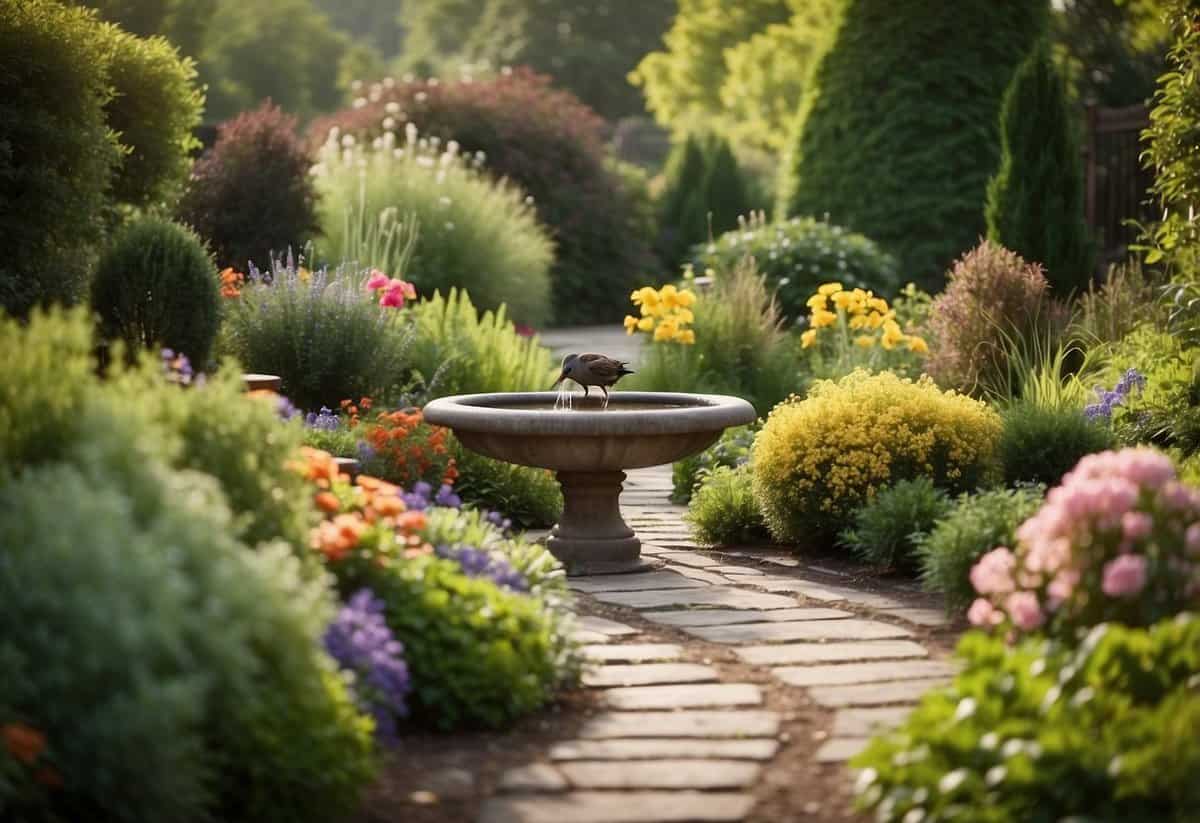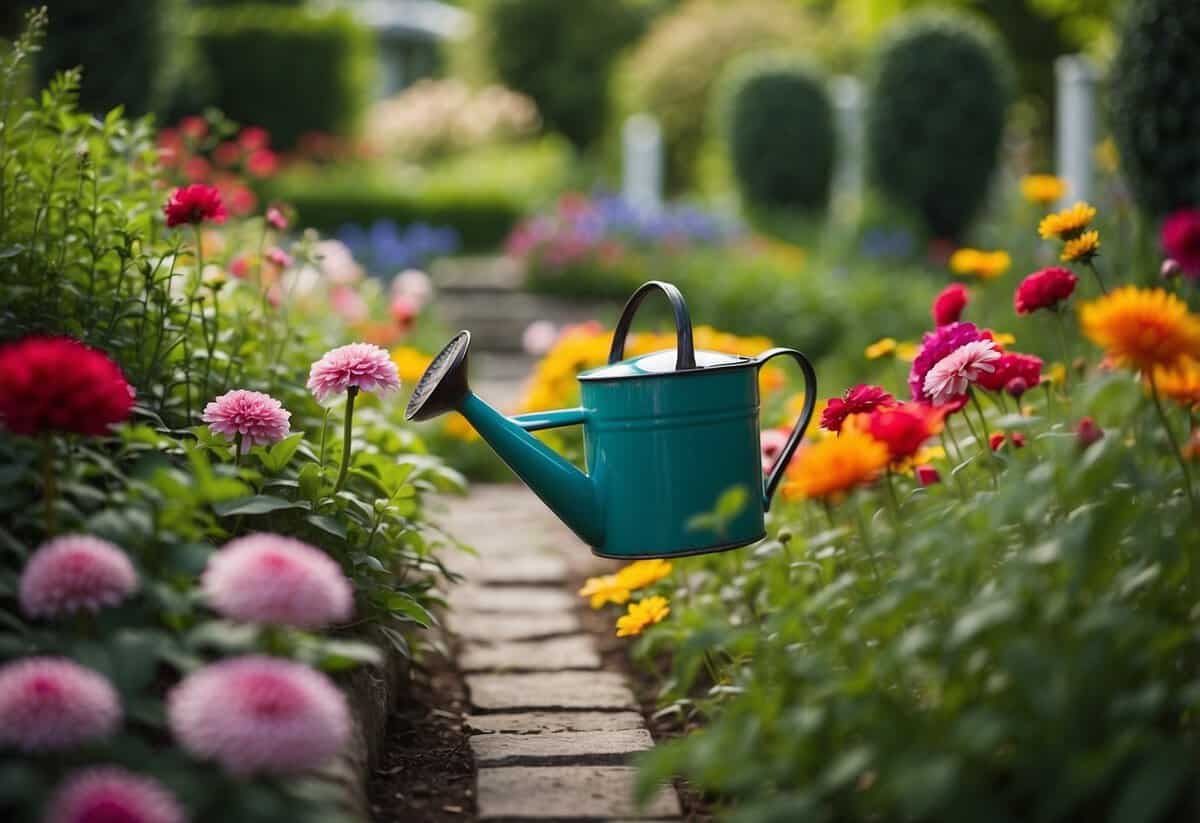Garden Help Tips: Easy Tricks for Thriving Plants
Gardening can be a fulfilling hobby, whether you’re a beginner or have been at it for years. There are always new techniques and tips you can learn to make your garden thrive. Starting a garden might seem daunting, but with the right advice, you’ll see that it’s more manageable than you might think.

What are some simple steps you can take to ensure your plants grow healthy and strong? From choosing the right plants for your climate to knowing how to properly water and fertilize, these tips will help you create a beautiful and productive garden. Dive in and discover how you can transform your outdoor space into a lush, green haven.
1) Use Organic Compost for Enrichment

Organic compost is a great way to improve your garden soil. It’s made from decayed organic matter like fruits, vegetables, manure, and grasses.
When ready, compost is dark, crumbly, and smells earthy. Apply it to your garden beds or mix it with potting soil for best results.
Regularly using compost can keep your soil healthy and productive. Compost improves soil texture, reduces compaction, and increases water and air retention. For more details, check this guide.
2) Regularly prune dead branches

Pruning dead branches is important for your garden. Dead branches can steal energy from healthy parts of the tree and make it look messy.
By removing these branches, you help the tree stay strong and healthy. It also reduces the hazard of falling branches.
Always use clean, sharp tools for pruning. This prevents the spread of disease and makes cleaner cuts. Check out these pruning techniques for best results.
Regularly inspect your trees and trim off any dead or weak branches you see. Your trees will thank you!
3) Install a Soaker Hose for Efficient Watering

Installing a soaker hose is simple and can save you a lot of time gardening.
First, clear the area where you’ll place the hose. Remove any weeds, rocks, or debris.
Next, lay out your soaker hose along your plants. Use garden pins to secure it.
Connect the hose to a standard hose connector and attach it to your water source.
Turn on the water at a low pressure and let it seep slowly into the soil. For a step-by-step guide, check out this article.
4) Plant Perennials for Easier Maintenance

Perennials are a great choice for low-maintenance gardens. They come back year after year, so you don’t need to replant them.
Daylilies are incredibly easy to care for and have thousands of varieties. These plants are perfect if you want vibrant flowers without the fuss.
Peonies are another good option. Once they are established, they can live for decades, providing beautiful blooms every year.
For bright summer colors, consider Black-eyed Susans. These plants thrive in full sun and well-drained soil, making them a reliable choice for any garden.
5) Mulch your garden beds

Mulching your garden beds helps retain moisture and keep weeds at bay. You should use organic mulches like wood chips, shredded bark, and compost. These break down over time and improve soil health.
Avoid using rocks as mulch. They don’t add benefits to your soil and can heat up quickly, harming your plants. Mulching also adds a nice aesthetic touch to your garden, making it look clean and well-maintained. Choose mulch colors that complement your home’s exterior for extra curb appeal.
6) Rotate Crops Annually

Rotating crops every year helps keep your garden healthy. By changing the planting location of your vegetables, you can prevent pests and diseases from building up in the soil.
Different plants use different nutrients. Rotating crops ensures that one area of your garden doesn’t get depleted of the same nutrients year after year. You will end up with stronger, healthier plants overall.
Try to avoid planting the same type of plant in the same spot for at least 3 to 4 years. For more detailed tips, you can check out the article on how to rotate garden crops.
7) Introduce Beneficial Insects

Adding beneficial insects to your garden can be a great way to keep pests in check. Ladybugs, for example, eat aphids that might harm your plants.
Ground beetles are another good choice. They take care of snails, slugs, and cutworms. You can attract them by planting perennials and keeping mulch on the soil.
Soldier beetles eat grasshopper eggs and aphids. To get these helpful insects to your garden, plant goldenrod, zinnias, and marigolds.
These insects will help keep your garden healthy and free of harmful pests.
8) Test Soil pH Yearly

Checking your soil pH each year is important for healthy plants. Soil that’s too acidic or too alkaline can harm growth.
Use a soil pH meter for quick results. Just push the probe into the soil and get an instant reading.
Another option is sending a soil sample to a lab, which gives detailed results at a low cost.
9) Use Raised Beds for Better Drainage

Raised beds can help improve drainage in your garden. By keeping the soil elevated, you can avoid waterlogged areas.
Adding compost is a great way to enhance drainage. It enriches the soil and helps water flow through.
Using soil amendments like perlite or sand can further improve water movement in your raised beds.
Try using durable materials like brick, wood, or blocks for the bed structure to keep the soil contained and well-drained. Raised beds also make it easier to control the quality of the soil and prevent erosion.
Consider placing mulch on top to retain moisture evenly.
Check out more ideas on improving drainage in raised beds here.
10) Install garden lights for evening ambiance

Garden lights can make your outdoor space magical after sundown. Low-voltage garden lights are easy to install and add a warm glow to your pathways and plants.
Start by planning where you want the lights. Think about safety and beauty. Place the lights near walkways and interesting plants.
Use a shovel to dig a small trench, about 3 to 6 inches deep, for the cables. Lay the cables and cover them carefully. Secure the connections with wire connectors to protect them from moisture and weather. For more details, check out this step-by-step guide.
Understanding Your Garden’s Needs

Knowing what your garden requires is key to having a thriving outdoor space. Two main areas to focus on are soil health and selecting the right plants for your climate and conditions.
Assessing Soil Health
Healthy soil is the foundation of a successful garden. To assess your soil, you should first consider its texture and composition. Sandy soils drain quickly but don’t hold nutrients well. Clay soils retain water but can become compacted. Loam is ideal and combines the best qualities of both.
Testing your soil’s pH is also important. Most plants prefer a pH between 6.0 and 7.0. You can test this with a kit from a garden center.
Organic matter, like compost, can improve soil structure and fertility. Adding compost annually can enrich the soil, boost nutrient levels, and support beneficial organisms. Mulching around plants helps retain moisture and regulate temperature, promoting root health.
Choosing the Right Plants
Choosing plants suited to your region’s climate and soil conditions helps them thrive with less effort. Start by researching your area’s hardiness zone, which shows the average minimum winter temperature.
Select plants that are native or well-adapted to your zone. Native plants tend to be more resistant to local pests and diseases.
Also, consider the sunlight in your garden. Some plants need full sun (at least 6 hours of direct light), while others thrive in partial shade.
Proper spacing is essential, too. Overcrowded plants compete for nutrients and water, making them more susceptible to disease. By taking these steps, you ensure healthier, more resilient plants that require less intervention.
Proper Watering Techniques

Proper watering is essential for a healthy garden. Knowing when and how to water can make a big difference in the growth and vitality of your plants.
Watering Schedules
Setting up a consistent watering schedule is important. Most plants thrive when they are watered two to three times per week. Adjust your schedule based on the weather; during hotter periods, your garden might need more frequent watering.
Morning is the best time to water because it allows moisture to reach the roots before the sun gets too hot. This also helps prevent diseases that can develop from wet foliage at night. Pay attention to the specific needs of each plant type. For example, some vegetables need more water compared to drought-resistant shrubs.
Efficient Irrigation Methods
Using efficient irrigation methods minimizes water waste and ensures plants receive the right amount of moisture. One effective method is drip irrigation, which delivers water directly to the root zone. This reduces evaporation and makes sure that water goes where it’s needed most.
Soaker hoses are another great option. They allow water to seep slowly into the soil. Position them at the base of your plants to keep foliage dry and reduce the risk of fungal diseases. Always aim to water the soil rather than the leaves. Mulching around plants also helps retain moisture and reduces the frequency of watering needed.
For more tips, you can explore watering tips for the garden and learn how to water plants efficiently.







